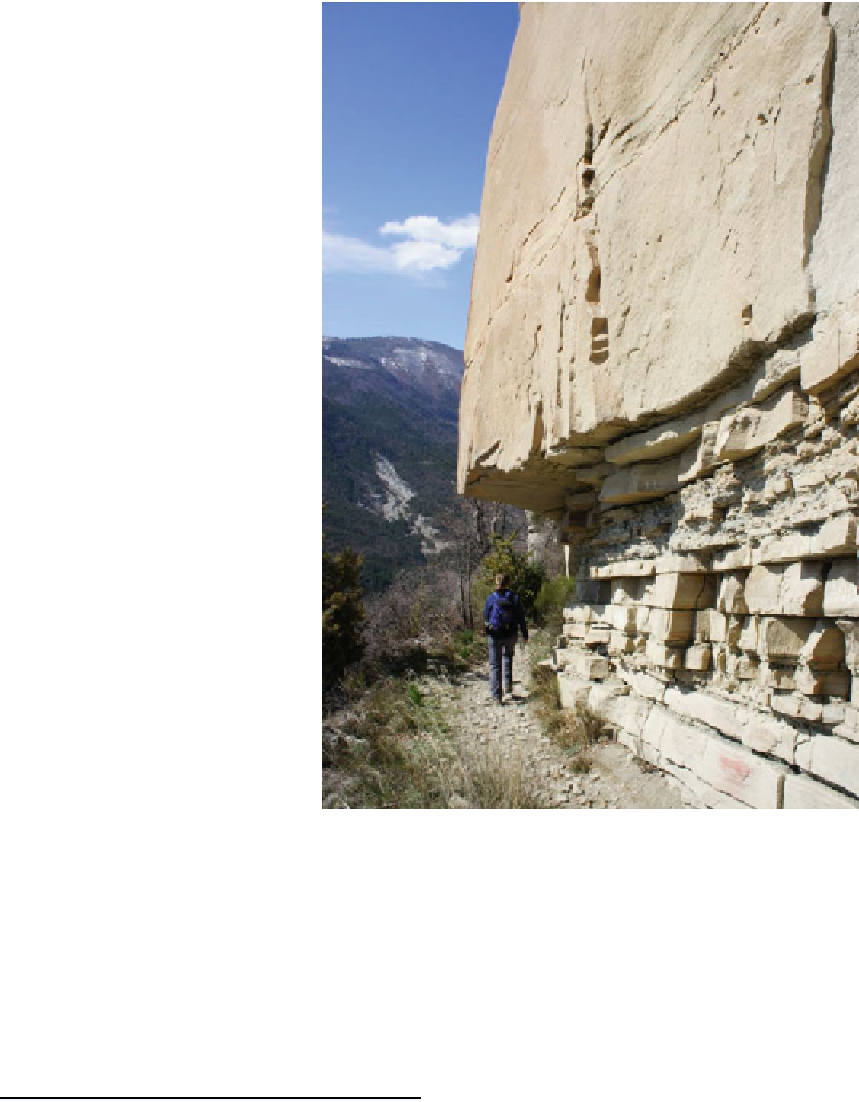Geoscience Reference
In-Depth Information
Fig. 6.29
Heterolithics in
the otherwise high N/G of
the Gres d'Annot, outcrops
above Annot town
time the biggest investment decisions have been
made. Even with 4D data, key heterogeneities
may remain sub-seismic.
Reservoir modelling in deep marine systems
therefore requires an understanding of the fine-
scale architectural concepts, steered by an over-
arching understanding of confinement.
reservoir, carbonates are often lumped as one
(as in this chapter), and
Carbonates are seen as 'just difficult.'
The bias towards clastic systems in reservoir
modelling is certainly strong, but the principles
and
5
apply equally well to all reservoir types.
Are carbonates more difficult to model? Not nec-
essarily, but they do tend to be different, as
reviewed by Burchette (
2012
).
For carbonate reservoir modelling, five areas
are highlighted for consideration:
1. Depositional architecture,
2. Pore fabric,
3. Diagenesis,
4. Fractures,
6.6
Carbonate Reservoirs
To the frustration of some sedimentologists, car-
bonate reservoir modelling suffers from two
common labels:
Carbonate systems are as varied as
siliciclastic systems, but whilst much atten-


